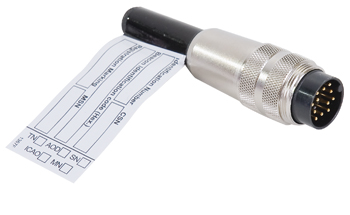In the highly regulated field of aviation, safety is of paramount importance. Ensuring the well-being of both the passengers and crew must be the top priority for pilots, regulators, and manufacturers alike. One of the most critical aspects of aviation safety: the significance of pilot safety and the crucial role played by a properly working Emergency Locator Transmitter (ELT).
Pilot Safety – A Comprehensive Overview
Pilot safety encompasses more than just the skill and expertise of the individual at the controls. It’s a broad area that includes training, health monitoring, equipment, regulations, and the mental well-being of the pilot.
- Training and Certification: Continuous training and re-evaluation are vital to maintain the proficiency and competence of pilots. Compliance with the regulations set by aviation authorities ensures that pilots are up-to-date with the latest techniques and safety standards.
- Health and Well-being: Regular medical examinations are mandatory to monitor the physical and mental fitness of pilots. Any underlying health issues must be addressed promptly to prevent potential risks in flight.
- Equipment and Technology: Ensuring that the pilot’s equipment, including navigation and communication tools, is in optimal condition plays a vital role in safety. Advanced technology can provide additional support and reduce human error.
- Regulations and Compliance: Adherence to regulations and guidelines set by aviation authorities minimizes the risk of accidents. Regular audits and inspections guarantee that safety protocols are followed.
The Importance of a Working Emergency Locator Transmitter (ELT)
An Emergency Locator Transmitter (ELT) is an essential piece of equipment in the aviation industry, designed to transmit a signal in the event of an emergency such as a crash. The importance of a functional ELT cannot be overstated, as it has significant implications for search and rescue operations.
- Timely Response: A functioning ELT ensures a swift response from search and rescue teams, allowing them to locate the aircraft quickly. This rapid action can be crucial in saving lives.
- Search and Rescue Efficiency: The signals transmitted by the ELT enable accurate pinpointing of the aircraft’s location, thus reducing the time and resources required for search and rescue operations.
- Legal Compliance: In many jurisdictions, the presence and proper functioning of an ELT are mandated by law. Regular testing and maintenance of the ELT are vital to comply with these regulations.
- Enhancing Overall Safety: Along with other safety measures, a working ELT is a critical component in the safety ecosystem of aviation. Its reliability can make the difference between life and death in an emergency.
Pilot safety is a multifaceted domain requiring attention to training, health, equipment, and regulations. The integrated approach ensures not only the safety of the pilots but also contributes to the overall security of the aviation industry.
The Emergency Locator Transmitter (ELT) stands as a testament to technological advancements that have been harnessed to save lives. Its proper maintenance and functioning are crucial in the prompt and efficient handling of emergencies.
Investing in both pilot safety and dependable ELT systems is not just a regulatory requirement but a moral imperative. These investments underline a commitment to human life and the principles of responsibility, diligence, and professionalism that are the hallmarks of the aviation industry.
Through collaborative efforts by pilots, airlines, regulators, and manufacturers, the focus on pilot safety and the utilization of effective ELT systems will continue to make air travel one of the safest modes of transportation. The relentless pursuit of excellence in these areas will undoubtedly lead to a safer future for all involved in aviation.















